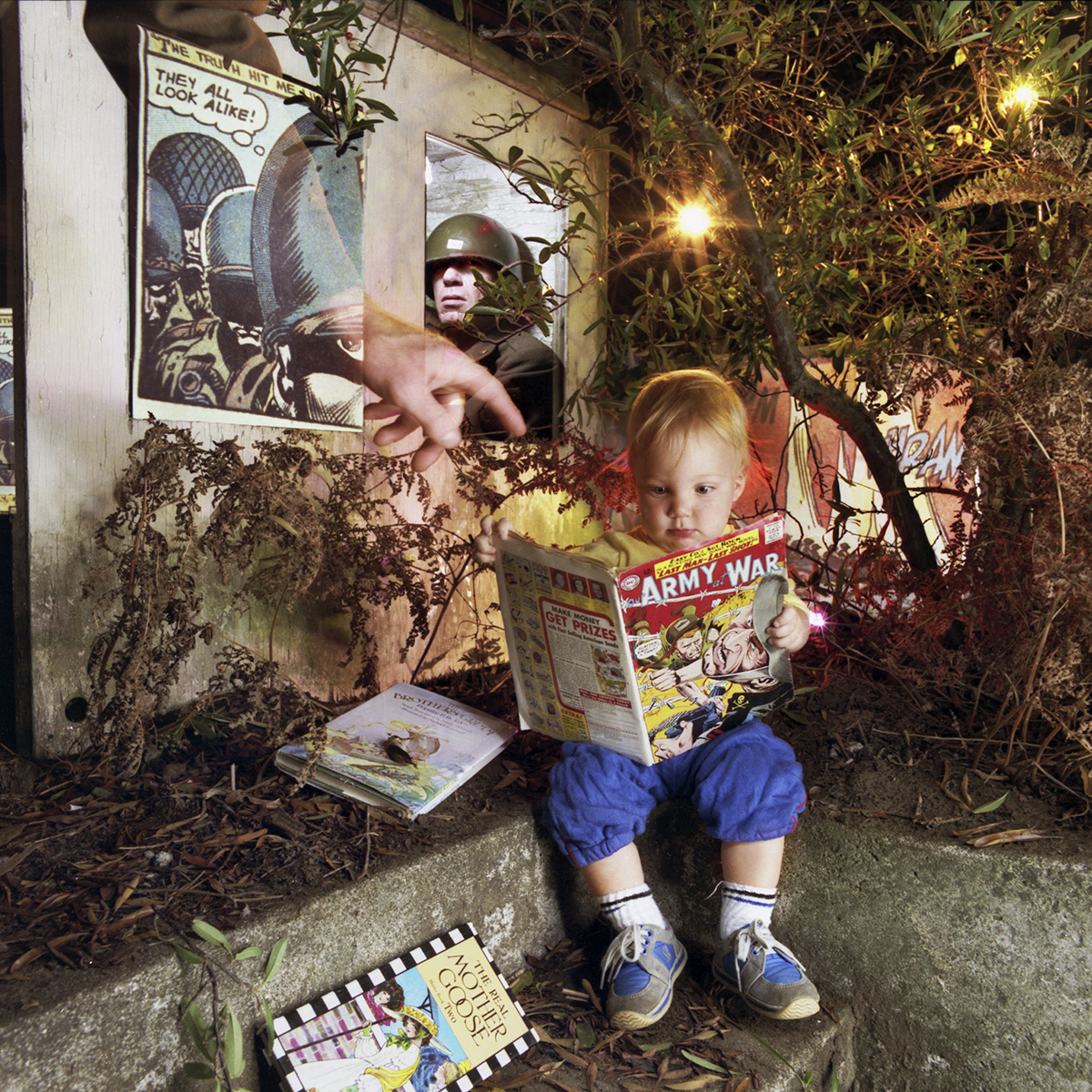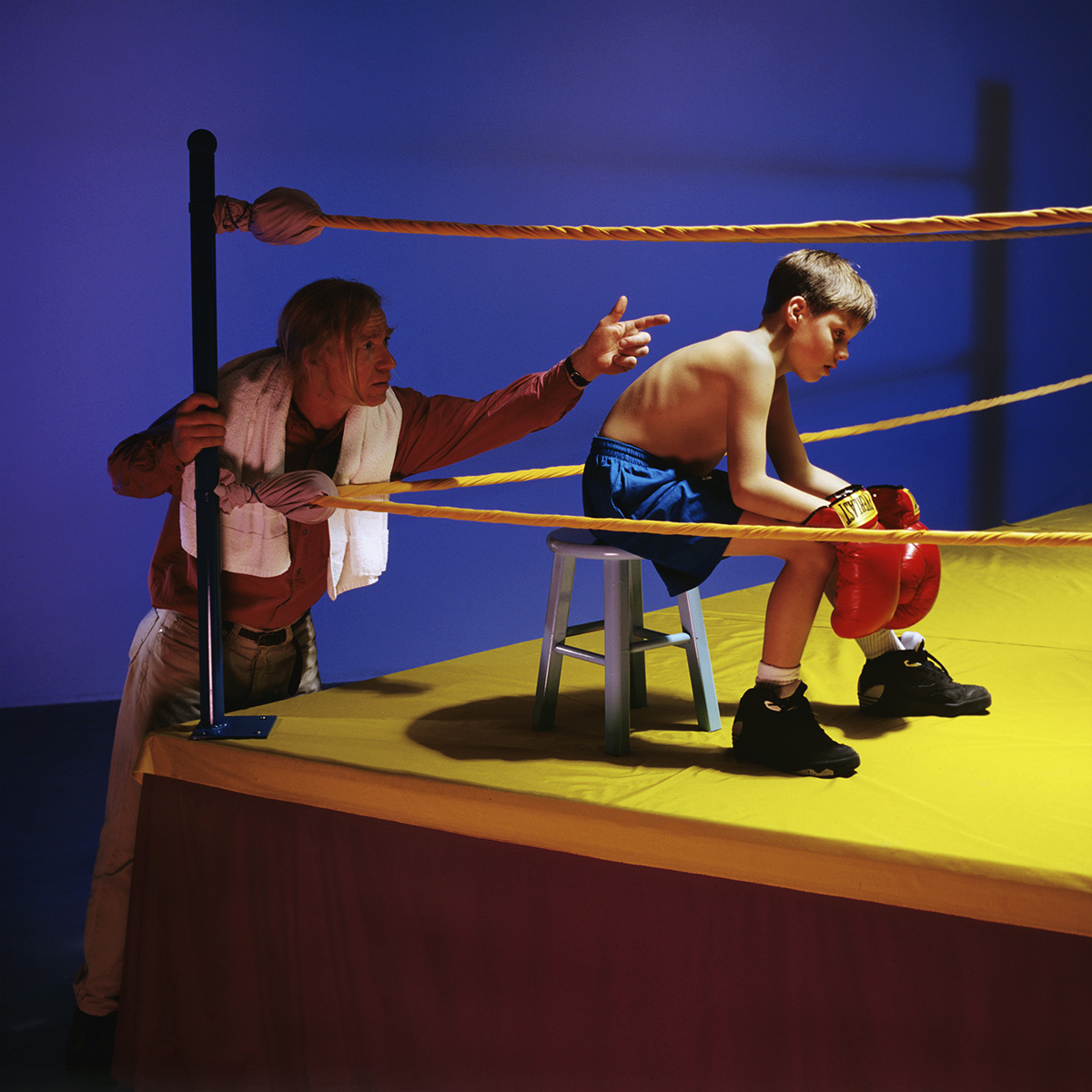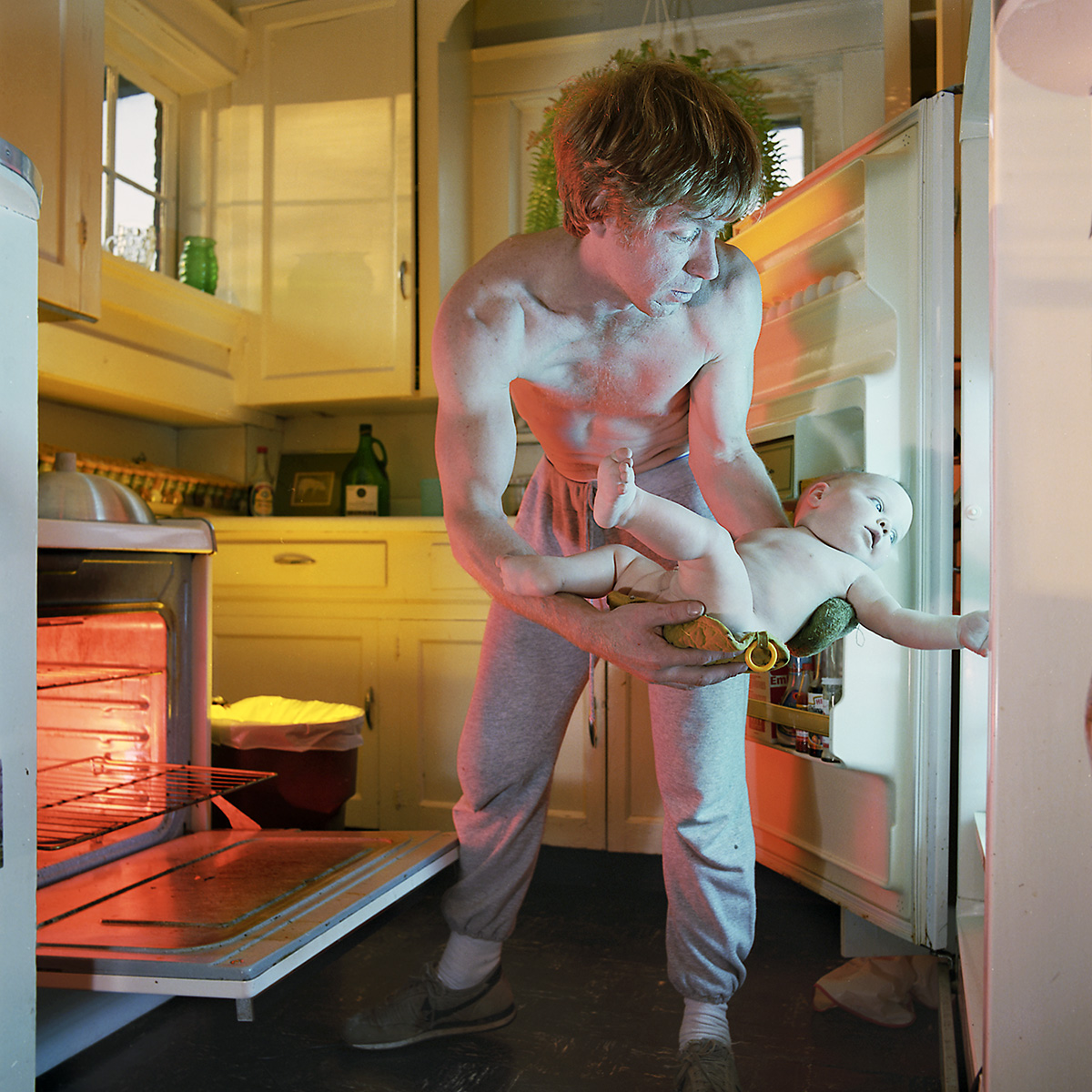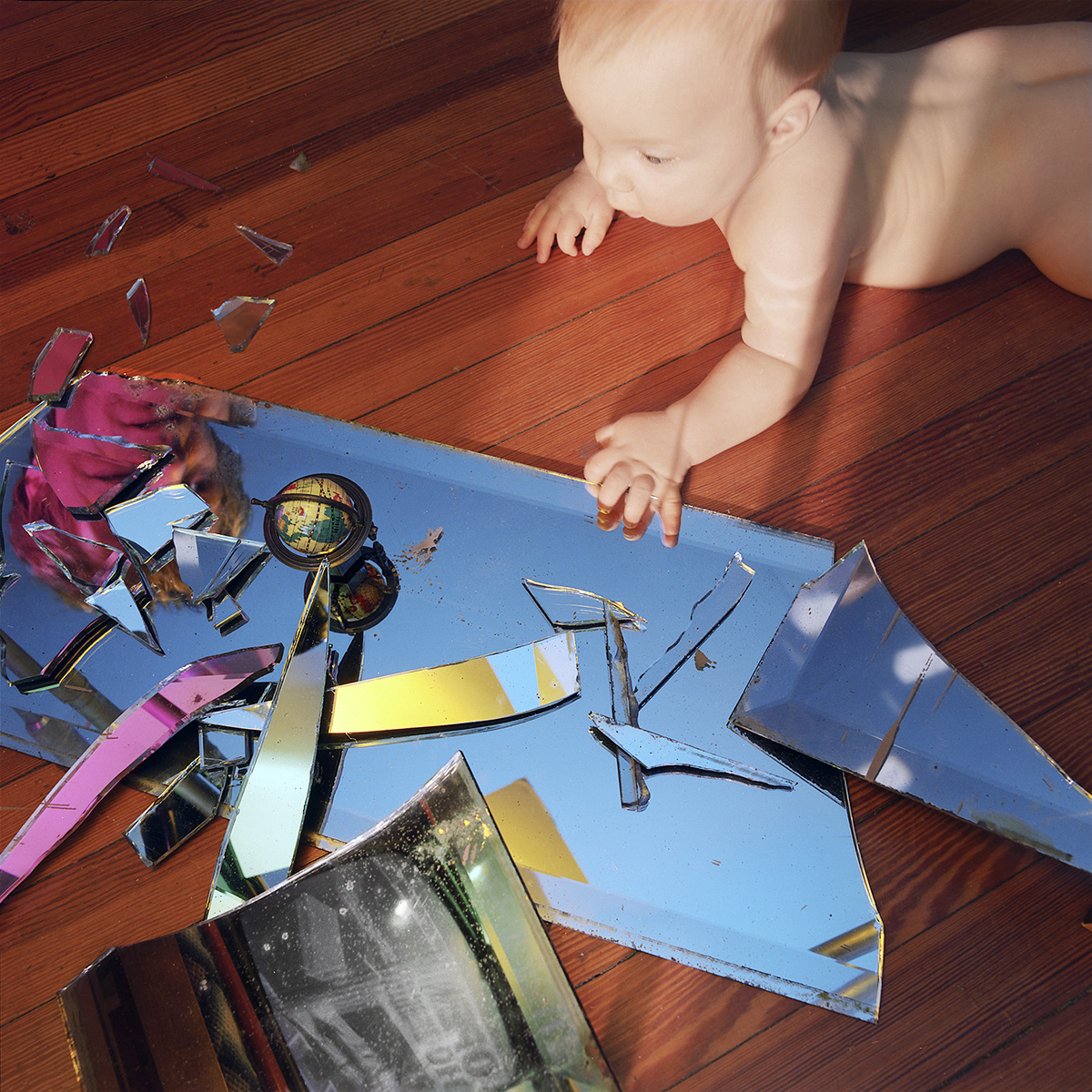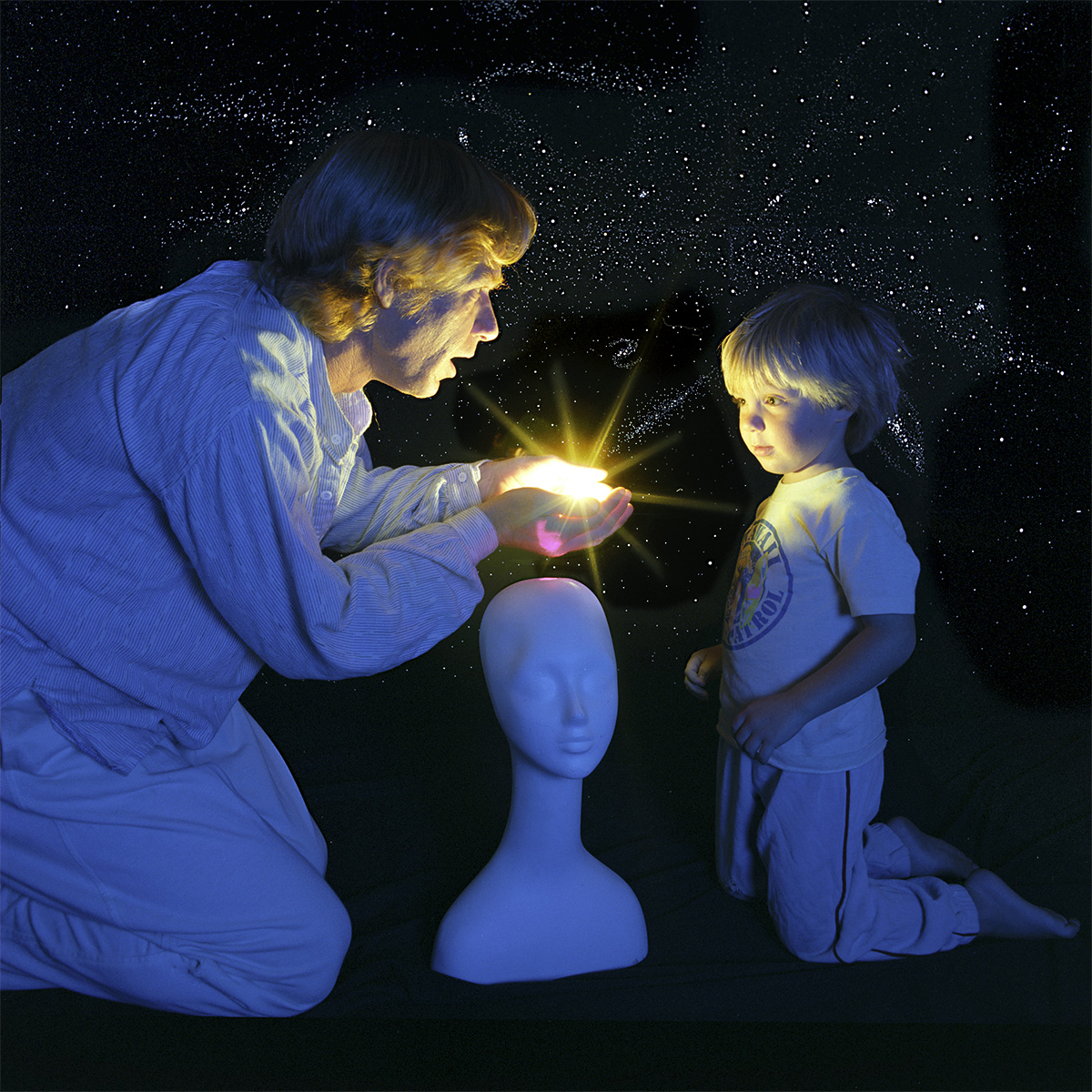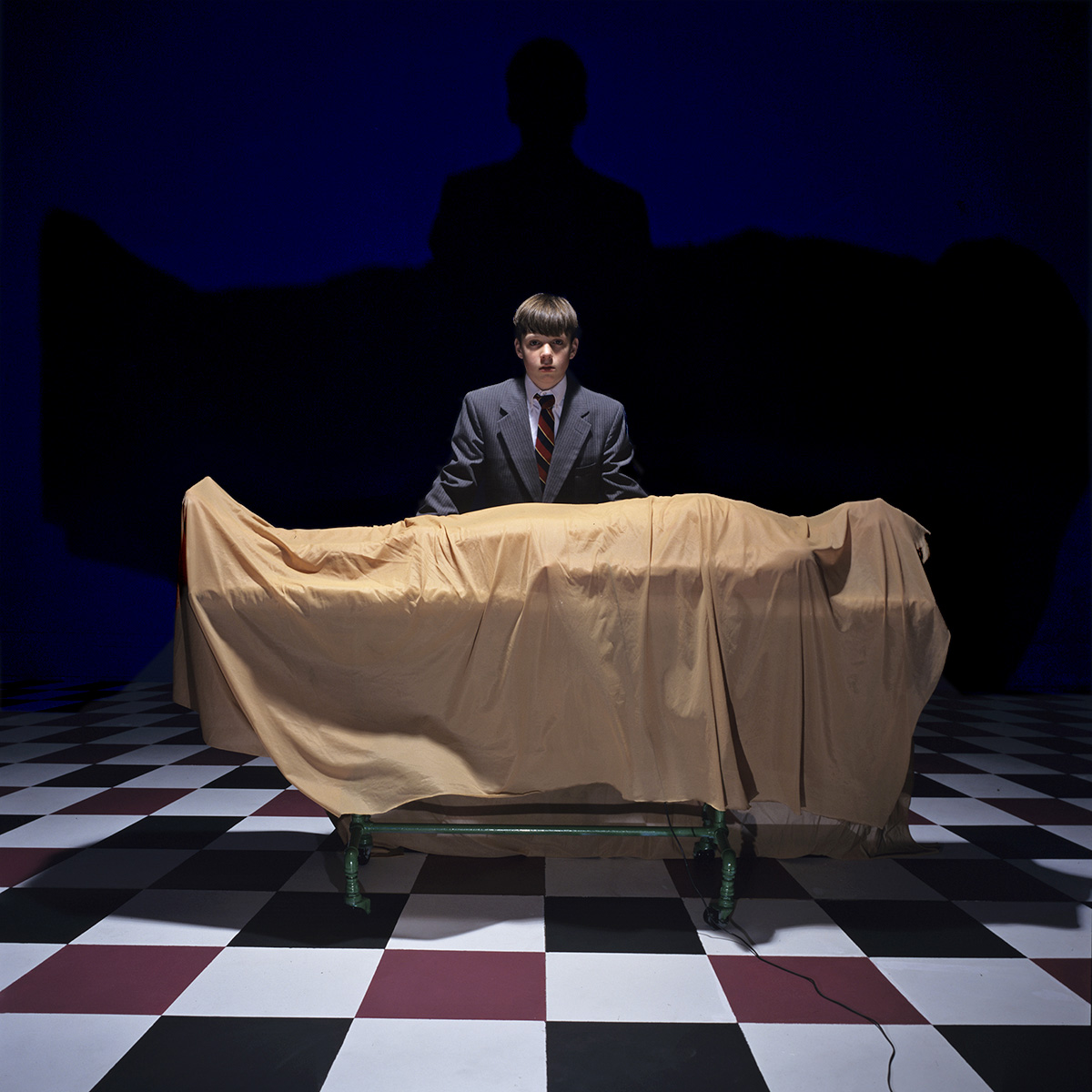A photo essay by Vance Gellert
Editor’s note:
The First Edition of CarlVision was published by Blue Sky Gallery (Portland, Oregon, 1987). The following is the Introduction to the Second Edition, published in 2013. With many thanks to Vance, we reprint that introduction here, along with notes and selected images from the photographic project. The full photographic project can be purchased here.
This photo essay accompanies the recent special issue of CrossCurrents on “The Spirituality of Parenting,” for which Vance and Carl supplied the cover image.
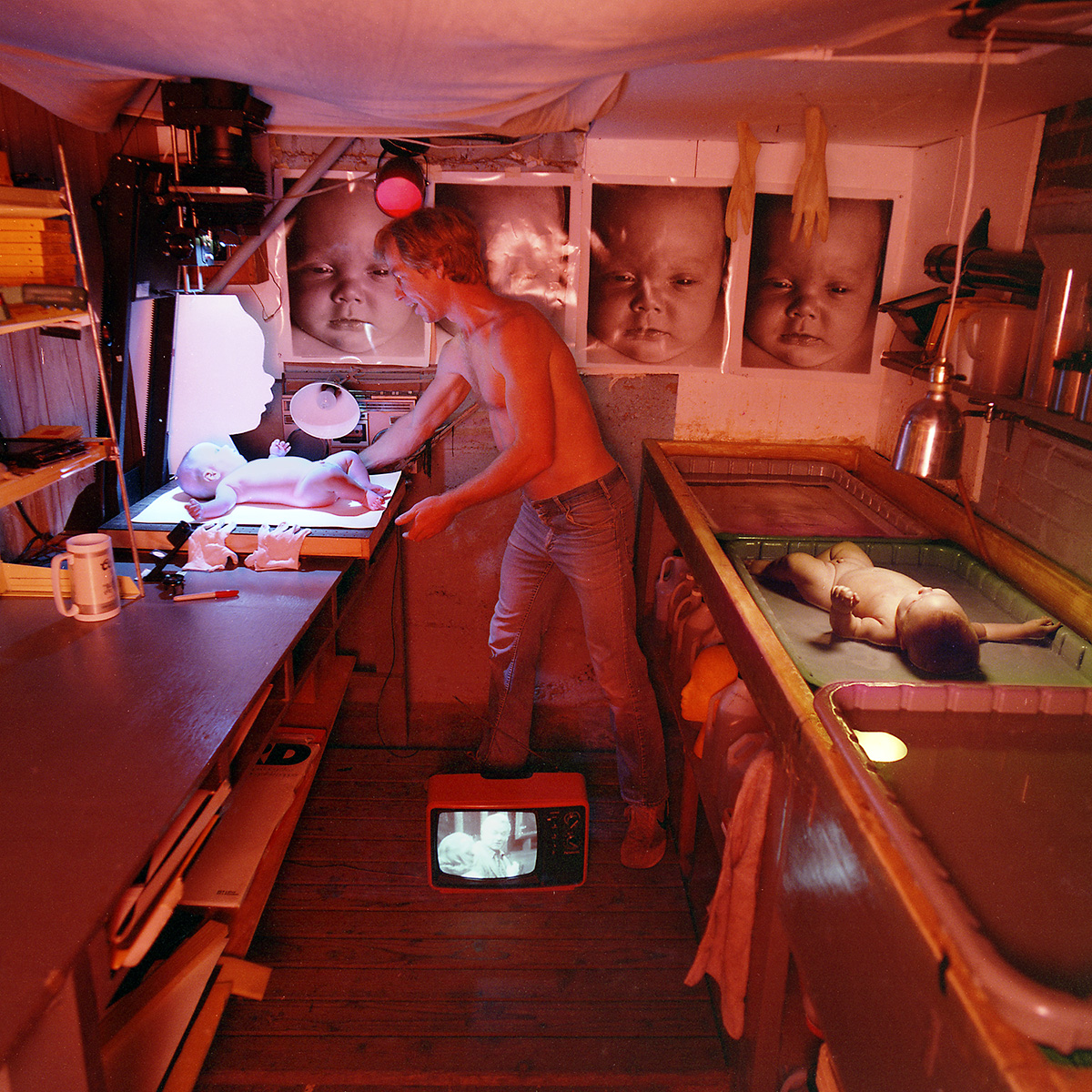
Vance Gellert, from CarlVision
CarlVision did not end with the first book of 25 images that was published in 1987 by Blue Sky Gallery. I continued to make CarlVision photos but at a much slower rate. The first book of photos came quickly during the first year and a half of his life. I had a sense of urgency during those 18 months reflecting his rapid early development.

Vance Geller, from CarlVision
We moved from Richmond to San Francisco when Carl was one-year old for Sally to do her medical residency training. After we adjusted to our new environment Carl started spending time in daycare. This was an unproductive time for the series. When he was five we moved to Minneapolis and he started kindergarten. The first day I rode the bus with him to school. The second day I went with him to the corner and put him on the bus. He asked why I wasn’t getting on and I said you go to school by yourself from now on. I could see the distress in his face as he pressed it against the window. I knew I was not going with him but he didn’t until that moment. I didn’t think about the fact that he was taking a public conveyance alone for the first time in his life. Without warning, our sudden separation induced his wide-eyed shock. I realized what I had done as I watched the bus drive away and felt immense guilt. I bought the Super Mario Brothers II video game he wanted so bad, and had it set up for him when he got home. I met him at the bus stop and said I had a surprise for him. It was on the TV when he came in the door. He went straight to it. I didn’t get a word out of him about how school had been. Things had definitely changed.

Vance Gellert, from CarlVision
Carl was venturing out into the world now and so should the CarlVision series. Working at home had been an interesting challenge. There I blended the home identity with a surreal expression of the issues that had inspired me to make the photograph. The home had gotten too small for Carl and I had to see if the series could follow him into the world. I took the project into the studio. There, anything was possible; I could create whole new worlds. At home it was too disruptive, now I could work at my leisure, the sets could remain up for days or weeks as they developed. There, strange ideas came to me like picturing Carl as a renewable resource when the first Gulf War flared up. That issue goes back long, long before that war to the Old Testament story of Abraham and Isaac, ironically in the same area. Was it a test of Faith or test of values? Most say Abraham passed the test; I say he failed miserably – willing to sacrificing his son for a God? I had a son now and there’s no god I’m willing to sacrifice him for. I don’t think any of them are worth it. Is this kind of thinking something I burden him with? It was like the image we made where I’m placing a boulder on his back. I had always felt uncomfortable about making that photograph, what was I condemning him to? I was showing it to some students several years after I made it, had mentioned my discomfort with the burden I was placing on him when a student spoke up: “I don’t see it that way at all. When first I looked at it, I thought you were taking the boulder off his back.” Metaphors can work both ways? Or maybe they’re in the eyes of the beholder.
After several shoots in the studio I noticed Carl had become less than enthralled working with me to make these photographs. One shot in particular I could not coach a certain look out of him but rather he looked sour, like he just didn’t want to be there. Then I had a head slapping moment, duuuhhh! Pay him! I pay for studio rent, props, paint, film, processing, printing but I don’t pay the subject of the shoot? So we negotiated a deal, five dollars for the first half hour and a dollar for every five minutes over. That changed everything. Now he’d ask, when do we do the next shoot, dad? In the studio it was take your time dad, sure you don’t want to do a few more? That used to bug him the most when I wasn’t paying him, I’d constantly want to do one more, and again, and again. Now he welcomed it and his bright directable self was back in the photos.

Vance Gellert, from CarlVision
My studio was over a car body shop. It was funky but highly functional for many things. Paint odor and old greasy car parts were part of the environment. During this time, I, along with my studio partners developed part of it into a gallery of art and then photography. It rose quickly in stature to the point where I felt I could no longer run a legitimate gallery in the environment and moved it, and lost my studio. But not before I did one last photograph, again one I didn’t want to do but it kept recurring to me. The concept was that I was lying on a gurney, completely covered by a shroud with Carl standing behind it in a suit. There was only one way to interpret what it said – I was dead, survived by Carl. It’s a beautiful photograph, one of my most elegant, but like the boulder, troublesome, until an artist friend set me straight. It’s the death of the original relationship, father as omnipotent guide, son as follower, to one of a father–son partnership. It’s evolution and rebirth, something to celebrate. What a perfect way to end the series, or rather for it to end itself.

Vance Gellert, from CarlVision
My career moved on, first with total involvement in the gallery, then leaving that and immersing myself into photography once again. But I had always thought that CarlVision had another life to live. Early on I took to storing the negatives in the freezer for future use, otherwise they have a bad habit of deteriorating. Several years ago, I pulled them out and printed them in the old fashion way, with an enlarger, color print paper, and a processor. They printed perfectly. It was rewarding because CarlVision was made before the advent of digital capture and Photoshop. I did everything in the camera and none of it in Photoshop. That way I spent my time with my subject matter, i.e. Carl, and zero time on the computer. It’s not the way it is now. This book was done on the computer and any future prints will be made from digital files. Also time had passed since their making, bringing a new perspective to the imagery.
Vance reflects on the photographic process:
From CarlVision, Vance Gellert
I was in my studio fooling around with two mirrors, trying to make a cross with them that would reflect me kind of as a Christ figure – I guess. I never got that far because I dropped one of the mirrors. The shards looked dangerous and I gathered them up to take home, a curious response. They would become the background for a small globe, the world is a dangerous place. But so is the home, I just made it that way and I put Carl in this perilous environment. After the staging and camera were all set up, Sally and I brought Carl in where we both held him tight until the instant we were to take the picture. On cue our hands would dart out, I’d take the picture and we’d both grab him. We made six pictures, this was the only one that our hands weren’t in, they were either exiting or coming back in to get him before he could move. Later, the fact that I would do such a dangerous looking picture troubled me. Sleepless at night I’d toss and fret about what was I doing, putting Carl in these kind of situations just to get the photograph. I thought I was taking all precautions at the time, but when I considered it later, I realized I was so focused on getting the picture I was not objective in assessing the risk I was making for Carl.
The Old Testament story of Abraham and Isaac came to me, Abraham was willing to sacrifice his first-born son to a higher cause. How could he do that? How could God ask that? Sometimes I wonder if it really was a test of faith, perhaps it was a test of values, one when it comes to our children, the next generation, we seem anxious to fail. We send them off to war, we pollute the environment, we take financial risks for them to pay off, and recklessly deplete resources, without consideration for the ramifications on them. Would God really expect us to put Him before our children? They are God’s gift to us for our worldly salvation. Only they can provide the new geniuses and saviors to show the path to a better way of living on this earth, how can we even consider sacrificing them? Whoa, this is just a picture, how did I get here?
-Vance Gellert, 2013
As always much love and thanks to Carl and Sally
All work at The Commons is published under Creative Commons license CC BY-NC-ND 4.0. https://creativecommons.org/licenses/by-nc-nd/4.0/

Vance Gellert was born on a farm in Rich Valley, Minnesota. His initial training was in the medical sciences, earning a PhD from the University of Minnesota in pharmacology. His interest in plant medicines and integrative models of healing led him to photography and finally to the Amazon basin and Andes to study and photography the ceremonies and rituals of traditional plant medicine use. This effort culminated in “Smoke and Mirrors,” an exhibition and book. Other projects include “BRIDGE”, about the survivors and first responders of the I-35 bridge collapse, “Sleeping Giant,” Minnesota’s Iron Range, “Street Corner Talking”, signers on street corners, and presently working on The Highway 20 Project, photographs from the longest two-lane blacktop in America. And other fun projects.
He has received grants and fellowships from numerous sources including the National Endowment for the Arts, for CarlVision. He has shown his photographs nationally and internationally and has worked in many collections throughout the world. He founded and was executive director and curator of pARTs Photographic Arts, a center for photography, until he left in 2003 to concentrate on his photography. He is also a yoga teacher, which is an extension of his interest in healing and spiritual practices. Vance’s son Carl received his PhD in Art History from Berkeley and teaches at Western Washington University in Bellingham.





